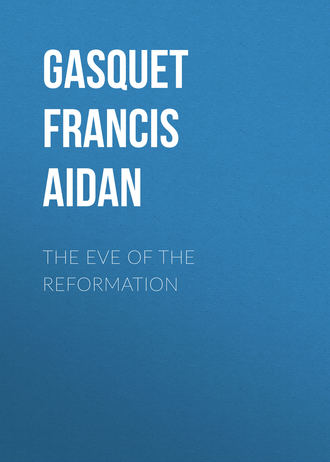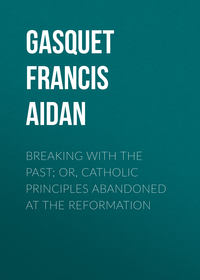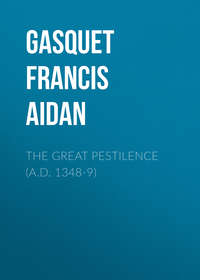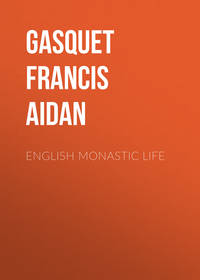 полная версия
полная версияThe Eve of the Reformation
216
Wilkins, Concilia, iii. p. 737.
217
Ibid., 720.
218
Wilkins, Concilia, iii. p. 727.
219
Richard Smythe, D.D., The assertion and defence of the Sacrament of the Altar, 1546, f. 3.
220
English Works, p. 940.
221
English Works, p. 921.
222
English Works, pp. 341-344.
223
Ibid., p. 346.
224
Ibid., p. 351.
225
Germen Gardynare, A letter of a yonge gentylman, &c. London: W. Rastell, 1534.
226
English Works, pp. 257-259.
227
Ibid., p. 1035.
228
Ibid., p. 409.
229
The Werke for Householders. London: John Waylande, 1537.
230
Richard Whitford, Dyvers holy instructions. London: W. Mydylton, 1541.
231
Sermons, sig. h. vij.
232
English Works (ed. 1557), pp. 233-4. This positive declaration of Sir Thomas More is generally ignored by modern writers. In a recently published work, for example (England in the Age of Wycliffe, by George Macaulay Trevelyan), it is stated that “we have positive proof that the bishops denounced the dissemination of the English Bible among classes and persons prone to heresy, burnt copies of it, and cruelly persecuted Lollards on the charge of reading it” (p. 131). In proof of this statement the author refers his readers to a later page (p. 342) of his volume. Here he culls from Foxe (Acts and Monuments) the depositions of certain witnesses against people suspected of teaching heresy. Amongst these depositions it is said by a few of the witnesses that some of these teachers were possessed of portions of the Scriptures in English. Mr. Trevelyan assumes, because witnesses speak to this fact, that it was for this they were condemned, or, as he puts it, “cruelly persecuted,” by the ecclesiastical authorities. Had he examined his authority, Foxe, more carefully, he would have found the actual list of articles formulated against these teachers of heresy. These alone are, of course, the charges actually made against them; and the mere deposition of witnesses in those days were, no more than they are in ours, the charges upon which the accused were condemned. In the articles or charges we find no mention whatever of the English Bible, and, according to the ordinary rules of interpretation of documents, this absence of any mention of Bible-reading in the indictment, formulated after the hearing of the evidence, and when witnesses had testified to the fact, should be taken to show that the mere possession of the vernacular Scriptures, &c., was not accounted an offence by the Church authorities. The real charge in these cases, as in others, was of teaching what was then held to be false and heretical, teaching founded upon false interpretations of the Scripture text, or upon false translations.
233
Ibid., p. 235.
234
Ibid., p. 240.
235
Ibid., p. 241.
236
Ibid., p. 240.
237
Ibid., p. 241.
238
Ibid., p. 245.
239
Ibid., p. 510.
240
Ibid., p. 678.
241
Roger Edgworth, Sermons, London, Caly, 1557, f. 31.
242
Sir Thomas More, English Works, p. 108.
243
Thomas Lupset, Collected Works, 1546. Gathered Counsails, f. 202.
244
Ibid. An Exhortation to young men, written 1529. He insists much on the obligation of following the teaching of the Church.
245
John Standish, A discourse wherein is debated whether it be expedient that the Scripture should be in English for all men to read that wyll (1555), A. iij.
246
English Works, p. 850.
247
J. S. Brewer, Henry VIII., vol. ii. p. 468.
248
Dore, Old Bibles, p. 13.
249
P. 15.
250
Ellis, Historical Letters, 3rd Series, ii. p. 71.
251
Johannes Cochlæus, An expediat laicis legere Novi Testamenti libros lingua vernacula, 1533, A. i. The warning of Cochlæus was addressed to the Scotch king, and as a result of this letter, pointing out the Lutheran character of the English version of Tyndale, the Scotch bishops in the Synod of St. Andrews in 1529 forbade the importation of Bibles into Scotland.
252
Ibid., L. iij.
253
Wilkins, Concilia, iii. p. 727.
254
Cf. Parker Soc. Tyndale’s Doctrinal treatises, &c., preface xxx.
255
Probably on Sunday, February 11, when Cardinal Wolsey, with six and thirty bishops and other ecclesiastics, were present at the burning of Lutheran books before the great crucifix at the north gate. Amongst the books, according to Tyndale, were copies of his translated Testament.
256
Dore, Old Bibles, p. 26.
257
Dore, ut sup., 32.
258
English Works, p. 422.
259
Dore, 35.
260
English Works, p. 849.
261
English Works, p. 341.
262
Ibid., p. 410.
263
Ibid., p. 416.
264
Ibid., p. 417.
265
Ibid., p. 419.
266
Ibid., p. 422.
267
Ibid., p. 424.
268
Ibid., p. 425.
269
Ibid., p. 427.
270
Ibid., p. 435.
271
Ibid., p. 437.
272
Ibid., p. 493.
273
Ibid., p. 422. For examples of other false translations, see also p. 449.
274
Standish, A discourse, &c., ut supra, sig. A. iiij.
275
English Works, p. 223.
276
Ibid., p. 223.
277
Standish, ut supra, sig. E. iiij.
278
Roger Edgworth, Sermons, f. 31.
279
The assertion and defence of the Sacrament of the Altar (1546), f. 3. The amateur theologians and teachers who sprung up so plentifully with the growth of Lutheran ideas in England seem to have been a source of trouble to the clergy. There was no difficulty in Scripture so hard which these “barkers, gnawers, and railers,” as Roger Edgworth calls them, were not ready to explain, and even women were ready to become teachers of God’s Word, “and openly to dispute with men.” Speaking in Bristol, in Mary’s reign, he advises his audience to stick to their own occupations and leave theology and Scripture alone, “for when a tailor forsaking his own occupation will be a merchant venturer, or a shoemaker will become a grocer, God send him help. I have known,” he says, “many in this town that studying divinity has killed a merchant, and some of other occupations by their busy labours in the Scripture hath shut up the shop windows, and were fain to take sanctuary, or else for mercery and grocery hath been fain to sell godderds, steaves, pitchers, and such other trumpery.”
280
A Commentary in Englyshe upon Sayncte Paule’s Epistle to the Ephesians, 1540.
281
An Exposition in Englysh upon the Epistle of St. Paule to the Colossians, 1548.
282
An Exposition, &c., upon the Philippians, 1545.
283
As an example of the open way in which the reading of the Bible was advocated, take the following instance. Caxton’s translation of the Vitæ Patrum, published by Wynkyn de Worde in 1495, contained an exhortation to all his readers to study the Holy Scripture. “To read them is in part to know the felicity eternal, for in them a man may see what he ought to do in conversation … oft to read purgeth the soul from sin, it engendereth dread of God, and it keeps the soul from eternal damnation.” As food nourishes the body, “in like wise as touching the soul we be nourished by the lecture and reading of Scripture… Be diligent and busy to read the Scriptures, for in reading them the natural wit and understanding are augmented in so much that men find that which ought to be left (undone) and take that whereof may ensue profit infinite” (p. 345).
284
B. Mus. Harl. MS. 172, f. 12b.
285
Harl. MS. 115, f. 51.
286
Ibid., f. 53.
287
In speaking of the third Commandment, The art of good lyvyng and good deyng (1503) warns people of their obligation to “Layr the holy prechyngys, that ys the word of God et the good techyngys, and shoold not go from the seyd prechyngs” (fol. 8. 2).
288
Ibid., f. 1.
289
The Myrrour of the Church (1527), Sig. B4.
290
Exornatorium Curatorum. W. de Worde. In 1518 the Synod of Ely ordered that all having the cure of souls should have a copy of this book, and four times a year should explain it in English to their people. (Wilkins, Concilia, III., p. 712.)
291
The Prymer of Salisbury Use. Rouen: Nicholas le Rour, f. b. vij.
292
The art of good lyvyng and good deyng. Paris, 1503, f. g. 2.
293
English Works, p. 116.
294
English Works, p. 117.
295
Ibid., p. 121.
296
Ibid., p. 420.
297
Sermons, fol. 40.
298
English Works, pp. 196-7.
299
Ibid., p. 198.
300
Ibid., p. 199.
301
Ed. W. de Worde, 1496.
302
William Bond, The Pilgrymage of Perfeccyon, Wynkyn de Worde, 1531, fol. 192.
303
Ibid., fol. 196.
304
Ibid.
305
English Works, p. 408.
306
The full title of this book is: Pupilla oculi omnibus presbyteris precipue Anglicanis necessaria. It is clear from the letter that W. Bretton had already had other works printed in the same way, and it is known that amongst those works were copies of Lynwode’s Provinciale (1505), Psalterium et Hymni (1506), Horæ, &c. (1506), Speculum Spiritualium, and Hampole, De Emendatione Vitæ (1510), (cf. Ames, Ed. Herbert, iii. p. 16). Pepwell the London publisher, at “the sign of the Holy Trinity,” was the same who published many books printed abroad, and had dealings with Bishops Stokesley and Tunstall.
307
For further information upon popular religious instruction in England, see an essay upon the teaching in the fourteenth and fifteenth centuries in my The old English Bible, and other Essays. The Rev. J. Fisher, in his tract on The Private Devotions of the Welsh (1898), speaking of the vernacular prayer-books, says, “they continued to be published down to the end of Henry’s reign, and, in a modified form, even at a later date. Besides these prymers and the oral instruction in the principal formulæ of the Church, the scriptorium of the monastery was not behind in supplying, especially the poor, with horn-books, on which were, as a rule, written in the vulgar tongue the Lord’s Prayer, the Creed, and the Hail Mary.” In 1546 appeared a prymer in Welsh in which, amongst other things, the seven capital or deadly sins and their opposite virtues are given and analysed. This book, consequently, besides being a prayer-book afforded popular instruction to the people using it. The prymers in Welsh, we are told, were usually called “Matins’ Books,” and continued to be published long after the change of religion. A copy published in 1618 is called the fifth edition, and copies of it are recorded under the years 1633 and 1783. “It is rather a curious fact,” writes Mr. Fisher, “that nearly all the Welsh manuals of devotion and instruction, of any size, published in the second half of the sixteenth and the first half of the seventeenth century, were the productions of Welsh Roman Catholics, and published on the Continent. In Dr. Gruffydd Roberts’s Welsh Grammar, published at Milan in 1567, will be found poetical versions of the Apostles’ Creed, the Lord’s Prayer, the Hail Mary, the Ten Commandments and the Seven Sacraments. This work was followed by the Athravaeth Gristnogavl, a short catechism of religious doctrine, translated or compiled by Morys Clynog, the first Rector of the English College in Rome. It was published at Milan in 1568, and contains the Creed, the Lord’s Prayer, the Hail Mary, the Ten Commandments, &c., in Welsh, with expositions.”
The above, with the prayer-books of 1567, 1586, 1599, were all the works of religious instruction and devotion (private and public) that appeared in Welsh down to the end of the sixteenth century. I might add that there is in the Earl of Macclesfield’s collection a large folio volume of Miscellanea (Shirburn MS. 113, D. 30), written between 1540 and 1560, which contains a prymer occupying several pages. There is also in the Swansea Public Library a Welsh-Latin MS. of the sixteenth and seventeenth centuries, written in different hands and in the South Walian dialect, which forms a manual of Roman Catholic devotion, containing in Welsh devotions for Mass, the usual meditations and prayers for various occasions, instructions, &c.
With the seventeenth century there is a good crop of manuals of devotion and instruction, such as the catechisms of Dr. Rosier Smith (1609-1611) and Father John Salisbury (1618 tacito nomine), both Welsh Roman Catholics (pp. 24-26).
308
A Werke for Housholders. London, R. Redman, 1537, sig. A. 8.
309
Ibid., sig. B. i.
310
Ibid., sig. C. 8.
311
Ibid., sig. D. 5.
312
B. Mus. Harl. MS. 2125, f. 272.
313
Penny Cyclopædia. Art., “English Drama.”
314
A Relation of the Island of England (Camden Society), p. 20.
315
Ibid., p. 23.
316
Venetian Calendar, ii. p. 91.
317
Works on the Supper (Parker Society), p. 229.
318
To take one instance: the church of St. Neots possessed many stained glass windows placed in their present positions between the years 1480 and 1530. Almost all of them were put in by individuals, as the inscriptions below testify. In the case of three of the lights it appears that groups of people joined together to beautify their parish church. Thus below one of the windows in the north aisle is the following: “Ex sumptibus juvenum hujus parochiæ Sancti Neoti qui istam fenestram fecerunt anno domini millessimo quingentessimo vicessimo octavo.” Another window states that it was made in 1529, “Ex sumptibus sororum hujus parochiæ”; and a third in 1530, “Ex sumptibus uxorum.”
319
History of Modern Architecture, pp. 37, 87.
320
Archæologia, vol. xli. p. 355.
321
Parish Life in England before the Great Pillage (“Nineteenth Century,” March 1898), p. 433.
322
Churchwardens’ Accounts (Somerset Record Soc.), ed. Bishop Hobhouse, p. 200, seqq.
323
Ibid., p. xxi.
324
Ibid., p. xii.
325
Archæologia, vol. xli., p. 333 seqq.
326
Somerset Record Soc., preface, p. xi.
327
J. W. Cowper, Accounts of the Churchwardens of St. Dunstan’s, Canterbury (Archæologia Cantiana, 1885).
328
Siméon Luce, Histoire de Bertrand du Guesclin, p. 19.
329
The words of Pope Leo XIII. as to the Catholic teaching most accurately describe the practical doctrine of the English pre-Reformation Church on this matter: “The chiefest and most excellent rule for the right use of money,” he says, “rests on the principle that it is one thing to have a right to the possession of money and another to have the right to use money as one pleases… If the question be asked, How must one’s possessions be used? the Church replies, without hesitation, in the words of the same holy doctor (St. Thomas), Man should not consider his outward possessions as his own, but as common to all, so as to share them without difficulty when others are in need. When necessity has been supplied and one’s position fairly considered, it is a duty to give to the indigent out of that which is over. It is a duty, not of justice (except in extreme cases) but of Christian charity … (and) to sum up what has been said, Whoever has received from the Divine bounty a large share of blessings … has received them for the purpose of using them for the perfecting of his own nature, and, at the same time, that he may employ them, as the minister of God’s Providence, for the benefit of others.”
330
The Economic Interpretation of History, p. 63.
331
Churchwardens’ Accounts (Somerset Record Soc.), p. xxiv.
332
Roger Edgworth, Sermons, London, R. Caly, 1557, p. 309.
333
Parish Life in England before the Great Pillage (“Nineteenth Century,” March 1898), p. 432.
334
English Gilds (Early English Text-Society), pp. lxxx. – civ.
335
Ibid., p. xiv.
336
The Economic Interpretation of History, p. 306.
337
English Gilds (Early English Text-Society), p. 3.
338
Ibid., p. 6.
339
Ibid., p. 8.
340
Ibid., p. 48.
341
Egerton MS., 142.
342
The existence of which I know from Mr. Francis Joseph Baigent, who with his usual generosity allowed me to examine and take my notes from the copies which he has among his great collection of materials for the history of Hampshire.
343
One example of this latter, or as I might call it, ordinary expense of the society, is worth recording. In 1411, and subsequent years, an annual payment of 13s. 4d. is entered on the accounts as made to one Thomas Deverosse, a tailor, and apparently a member of the fraternity. The history of this man’s poverty is curious. When Bishop William of Wykeham, desiring to build Winchester College, purchased certain lands for the purpose, amongst the rest was a field which a tailor of Winchester, this Thomas Deverosse, subsequently claimed; and to make good his contention, brought a suit of ejectment against the Bishop. The case was tried in the King’s Bench, and the tailor not only lost, but was cast in costs and so ruined. With some writers, William of Wykeham’s good name had been allowed to suffer most unjustly for his share in the misfortunes of the unlucky tailor; for the Bishop not only undertook to pay the costs of the suit himself, but agreed that the college should make the unfortunate claimant a yearly allowance of 8d. to assist him in his poverty. The Tailors’ Guild secured to him a pension of 13s. 4d.
344
Here is the bill for the annual feast in the Guild of Tailors of Winchester in 1411. The association was under the patronage of St. John the Baptist, and they kept their feast on the Day of the beheading of the Saint, August 29. In this year, 1411, the 29th of August fell upon a Saturday, which in mediæval times, as all know, was a day of abstinence from flesh-meat. It is to be noticed, consequently, that provision is made for a fish dinner: “6 bushels of wheat at 8½d. the bushel; for grinding of the same, 3d.; for baking the same, 6d.; ready-made bread purchased, 12d.; beer, 7s. 1d.; salt fish bought of Walter Oakfield, 6s. 8d.; mullet, bass, ray, and fresh conger bought of the same Walter, 6s. 8d.; fresh salmon of the same, 8s.; eels, 10½d.; fresh fish bought of John Wheller, ‘fisher,’ 2s.; ditto, of Adam Frost, 9s.; ditto, bought of a stranger, 2s. 8d.; beans purchased, 9d.; divers spices, i. e. saffron, cinnamon, sanders, 12½d.; salt, 2d.; mustard, 2½d.; vinegar, 1d.; tallow, 2d.; wood, 18d.; coals, 3½d.; paid to Philip the cook, 2s.; to four labourers, 2s. 6d.; to three minstrels, 3s. 4d.; for rushes to strew the hall, 4d.; three gallons and one pint of wine, 19d.; cheese, 8d.” Making in all a total of £3, 4s. 3½d. This, no doubt, represented a large sum in those days, but it is as well to remember that at this time the guild consisted of 170 men and women, and the cost of the feast was not one-sixth part of the annual income.
345
Harl. MS. 4626, f. 26.
346
Ibid., f. 29. This was confiscated to the Crown on the dissolution of the Guilds and Fraternities under Edward VI.
347
Introduction to English Economic History (2nd ed.), i. pp. 100-101.
348
Old Crown House, p. 36, cf. pp. 37-39.
349
See the remarks in regard to France of M. Charles de Ribbe, La Société Provençale à la fin du moyen age, 1898, p. 60. Speaking of the fifteenth-century wills, he says: “Nous en avons lu un grand nombre, et nous avons été frappé de la haute inspiration, parfois meme du talent, avec lesquels des notaires de village savaient traduire les élans de foi et de piété dont ils étaient les interprètes chez leurs clients… Cette foi et cette piété; trouvé d’abord leur expression dans le vénérable signe de la sainte croix (lequel est plus d’une fois figuré graphiquement). Suit la recommandation de l’âme à Dieu Créateur du ciel et de la terre, au Christ rédempteur, à la Vierge Marie,” &c. (p. 91).






